Behind-the-scenes with the makers of the WoW TCG and a loot card giveaway
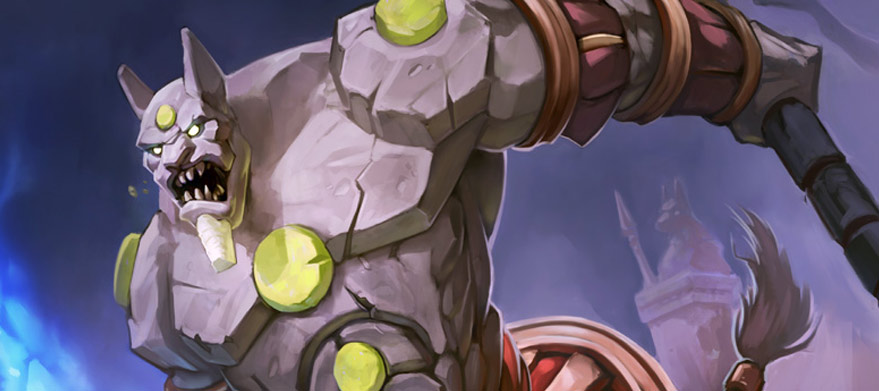
We just revealed 11 of the new cards coming in the next set for the World of Warcraft Trading Card Game , and some of them are a doozy. I had a chance to chat with Drew Walker, Creative Lead and resident lore hound at Cryptozoic.
We talk about everything that goes into making these cards, how the ones we revealed have changed during testing, and give away some loot cards of our own at the end of the article.
PCG: One of the things I admire about WoW TCG's cards is how well they manage to capture the feel of playing the MMO. What card best captures that feeling in the new set?
Drew Walker: Hmm, quite the tricky question! When I joined the World of Warcraft TCG team four years ago, I was coming from a heavy MMO background and I really pushed to make everything replicate what it does in the MMO.
As I've gotten older and wiser, though, I've realized that there are many times that literal recreations can cause problems in the TCG, and that the more important part is that you get the feel and/or purpose of the ability across correctly in a fun way. Sometimes this means designing a card more around its name than around what it actual does in the MMO. Let's be honest, something like +10% crit to your heals is a pretty boring TCG card.
That being said, I think that Blood Parasite is probably the best recreation of an MMO ability. The ability creates a few Blood Parasite ally tokens that you can use to hit your opponent, and when they die, they heal your hero. The second part is a little more abstract than the actual MMO ability for the purposes of making a more open-ended, fun, and exciting card.
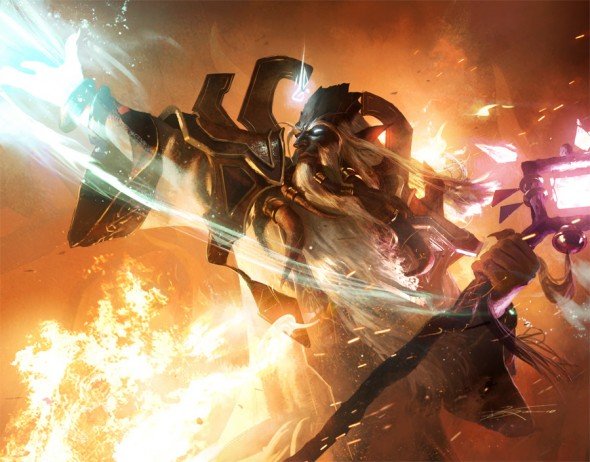
PCG: The Tomb of the Forgotten set is based on Uldum in World of Warcraft. What do you see as the big themes of that zone you wanted to replicate in the TCG, and how closely do you try to mimic specific quests or mechanics found there?
The biggest gaming news, reviews and hardware deals
Keep up to date with the most important stories and the best deals, as picked by the PC Gamer team.
DW: We definitely try to get as much flavor as we can without sacrificing gameplay... As you can imagine, it's often difficult to do exact ports from a video game to a card game. The story elements going on for the Aftermath block [which Tomb of the Forgotten closes up] involve traveling to three of the five new zones that were added with Cataclysm: Vashj'ir, Mount Hyjal, and Uldum.
There are plenty of times that we have very iconic or memorable quests that we really want to make sure we represent with a good flavor and mechanical tie-in. Uldum is a perfect example of a location that we felt had to be in the set, and that we felt should definitely have a power that's related to the zone itself and the story that's being told there.
The Uldum location card grants a weapon you control +3 ATK for the turn, or an armor you control +3 DEF for the turn. This really hammers home that Uldum is all about equipment, since in the MMO, an ancient technology that the titans left behind for the Tol'vir to guard lies beneath the sands of Uldum.
PCG: From a gameplay perspective, this set completes the Monster hero lineup. Did you have any other big-picture goals for this set?
DW: With the Aftermath block coming to a close, we wanted to feature a new Monster race that really got the flavor of Uldum across, and the Tol'vir fit the bill perfectly for us.
We also wanted to finish the class ability cycles (groups of cards that have a mechanical link) that were set up by adding Eternal class abilities and class cards that cared about having Monsters. We felt that we could use some more “class matters” cards because that was a pretty big theme for block as well, so we added new Monster allies that have the Empower keyword.
Story wise, we wanted to make sure Aggra and Thrall were in the set since the Earthen Ring had some loose tie-ins with what was going on during this block.
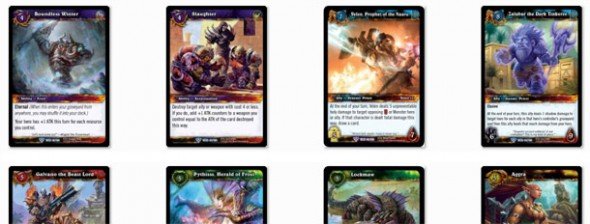
PCG: Where do you begin when designing a big set like this?
DW: Our main design goal is always to continue evolving the game and creating a great player experience, so we definitely start there. Our specific goals for each set are determined by what's already in place, where we think players would like to see the game go, and how that fits in with the source material.
We knew we were going to be using Uldum as the setting before any design on the set started, and the previous two sets had already set some things up that needed to get fleshed out more or finished with this set.
There's pretty much always enough on both sides of this equation—source material vs. design goals—to make it possible to marry the two. We definitely look for inspiration from the source material, like trying to figure out what the Tol'vir would be about, but also happily make them all dual-class so that they would work better with the Empower mechanic that was set up with the previous two sets. Tomb of the Forgotten is a great third set in part because it ties together all the themes from the previous sets and adds new layers for players to explore.
PCG: How do you test cards for imbalances—is it a matter of tightly controlling stat values on cards, or more make-it-and-play-with-it to see how it works in practice?
DW: Well, it's both knowing where to start and then testing, testing, testing to make sure it works.
Since Tomb of the Forgotten is the 18th World of Warcraft TCG expansion (not including Treasure Packs) we have a pretty good idea of where our baseline stats lie in relation to cost. We have a pretty nifty development tool that we use to build decks, and we can search for any number of variables to build constructed decks to test the power of a given card in the constructed format.
Every card also gets tested in limited (sealed and draft) and/or constructed decks a good amount, to make sure that we have fun and exciting cards for all the different types of players to use. We always focus in on cards that might need even more testing because of their power level or the play experience that goes along with the card.
We look at any card from both the perspective of the person playing the card and of the opponent having the card played against them.
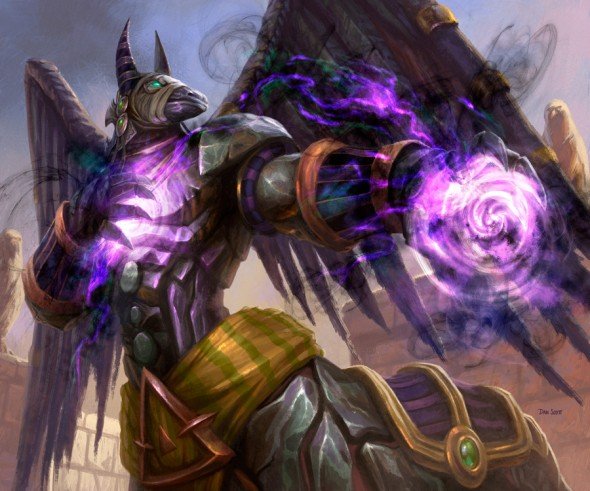
PCG: Can you walk us through how one card in this set has changed from inception to final version?
DW: One of my personal favorite cards in the set is Akhet. He started off having a verbal cue when you played him, so if you roared when he came into play, you could exhaust all opposing heroes and allies. He also had Ferocity (can attack immediately) and he had Assault 1 (+1 attack during your turn).
The feeling on the R&D team was that because he was a lion, he should roar, and that roar would strike fear into his enemies and he would get stronger for every enemy that he scared. That initial design created an ally card that was used many times like an ability, and he wasn't all that fun to play other than for the pure numbers [benefit].
The second design of him still aimed to get across that feeling of a lion across, but also his connection as the pet of King Phaoris. In my head, Akhet would be a ruthless protector of his master, much like any good pet, and seeing his master in danger would make him even fiercer.
This led to a design that gave Akhet the keyword Protector, and he would double his ATK and Health while his hero had 5 or less remaining health, as well as gaining the new keyword Sentinel. We all liked the card a lot, but felt it was missing something and was too difficult to really pull off.
So we tweaked the card one final time by changing the condition that would make Akhet go into super-beast-mode. Instead of your hero having 5 or less remaining health, we changed it to be while Akhet was the only ally in play. This really got the sense that he was king of the jungle across and it provides players with a much more tangible goal.
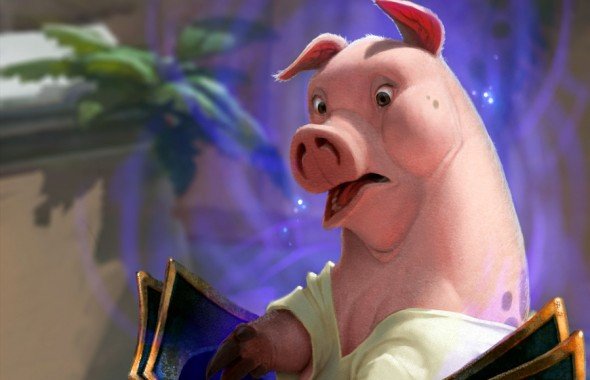
PCG: There are some very cool mechanics on some of these cards you've shown us , like Aggra, Variable Pulse Lightning Capacitor, and Ko'gun. Can you briefly explain the new mechanics added in this set and why you decided to add them?
DW: For all the cards you listed, the goal was pretty simple: make a fun and exciting card that players would enjoy, and that each add something to the overall game and player experience. This is the basic principle behind all the cards we make. Each of the cards you listed drew some inspiration from the lore or from an in-game connection.
Aggra is a shaman so she can command the four elements, hence getting to choose between the four keywords she has. Variable Pulse Lightning Capacitor clearly need to have some variable on it because of its name. And Ko'gun makes fire elementals because, well, it's the Hammer of the Firelord.
The only real new mechanic in the set is the new keyword Sentinel. It's found mostly on the Tol'vir, but you can find it on a few other cards, as well. An ally with Sentinel gains the power to ready itself after the first time it exhausts each turn.
Now, if you have no idea what that means, the simplified version is that it means you can attack twice on the same turn with the same ally if it has Sentinel, or you could attack once and then wait to protect twice if the ally had Sentinel and Protector. You also get double value out of allies with Sentinel for any cards that also have a cost of exhausting allies because you can exhaust the same ally twice.
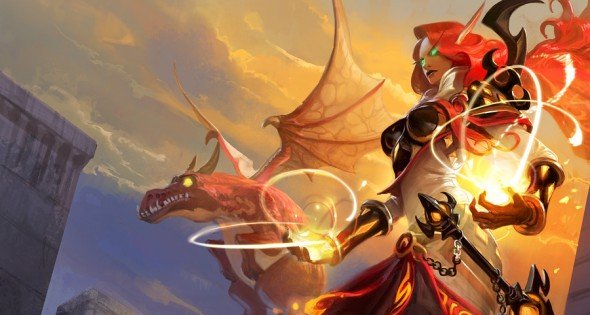
Win some cards (and in-game loot) of your own
We've also got loot cards to give away! Specifically, one White Riding Camel mount, two Sand Scarab pets, and three Spurious Sarcophagus items.
To enter, simply leave a comment on this post telling us what your favorite board or card game is and why. The winners will be selected at random on Tuesday, June 12 and we'll contact them directly at the email address used to register their account on this site. The loot card will be mailed to the winners, and you must live in the United States to be eligible. (Sorry, legal restrictions!)
Even if you don't win, you can try out the TCG. If you're interested, I recommend starting with the Class Starter Decks or Champion Decks , which give you a pre-built deck to play with on the cheap. If you're feeling real bold, you can find a Tomb of the Forgotten release party tournament at a shop near you.
UPDATE: Winners have been selected and contacted for mailing addresses. If you won, check the email address you used to sign up on this site. If winners do not contact us with a US mailing address within 24 hours, we'll select new winners and contact them for the cards.
White Camel mount: Level1paladin (claimed)
Sand Scarab pets: LegendoftheGamer7 (claimed), Grakulen
Spurious Sarcophagus item: Starmanx22 (claimed), oakfad, slamueladams (claimed)

